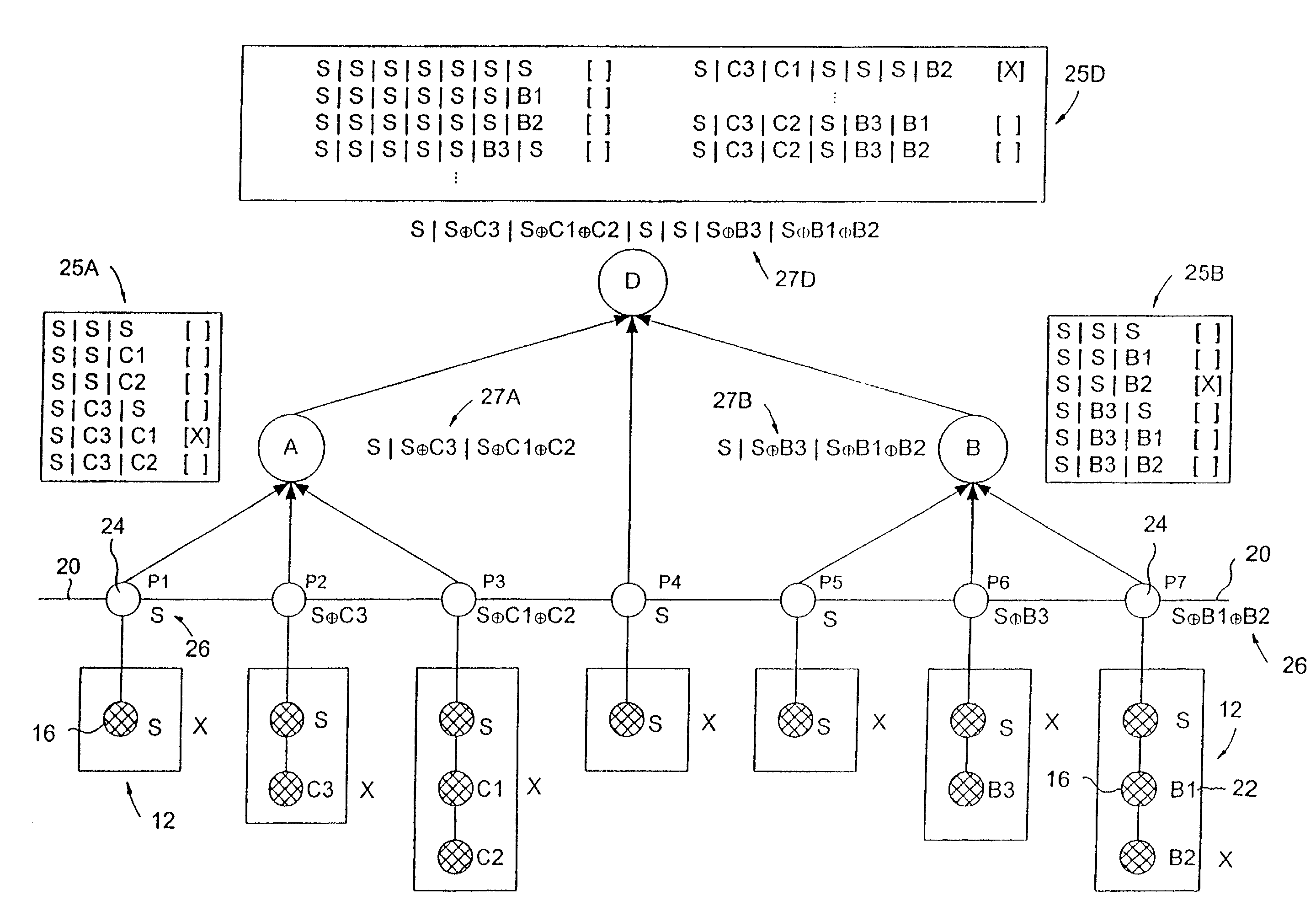Method and system for resource requirement planning and generating a production schedule using a uniform data model
a technology of resource requirements and production schedules, applied in the field of system and method for managing resource, assembly and documentation requirements for manufacture, can solve the problems of complex code rules which are entered, the production requirements of a set of product orders become more difficult, and the complexity of various boms and associated documentation is rapid and difficult to process
- Summary
- Abstract
- Description
- Claims
- Application Information
AI Technical Summary
Benefits of technology
Problems solved by technology
Method used
Image
Examples
Embodiment Construction
[0048]FIGS. 1–5 are graphical representations of a uniform product model or net 10 which represents an article of manufacture having a number of design variants and which can be used to analyze the article for the purposes of determining parts requirements manufacturing data, etc. For simplicity in the following discussion, the article of manufacture will be considered to be a car. However, this is not intended to be limiting and the invention can be applied to other articles of manufacture. In addition, the invention will be discussed primarily with regard to variations in the parts used to manufacture a given article. However, as detailed further below, variations in connections between parts can be treated in a similar manner. Accordingly, while the term “part” is used throughout, one of skill in the art will appreciate that various features of the invention can also be adapted to represent and process connection requirements.
[0049]Net 10 has a plurality of positions 12 connected...
PUM
 Login to View More
Login to View More Abstract
Description
Claims
Application Information
 Login to View More
Login to View More - R&D
- Intellectual Property
- Life Sciences
- Materials
- Tech Scout
- Unparalleled Data Quality
- Higher Quality Content
- 60% Fewer Hallucinations
Browse by: Latest US Patents, China's latest patents, Technical Efficacy Thesaurus, Application Domain, Technology Topic, Popular Technical Reports.
© 2025 PatSnap. All rights reserved.Legal|Privacy policy|Modern Slavery Act Transparency Statement|Sitemap|About US| Contact US: help@patsnap.com



